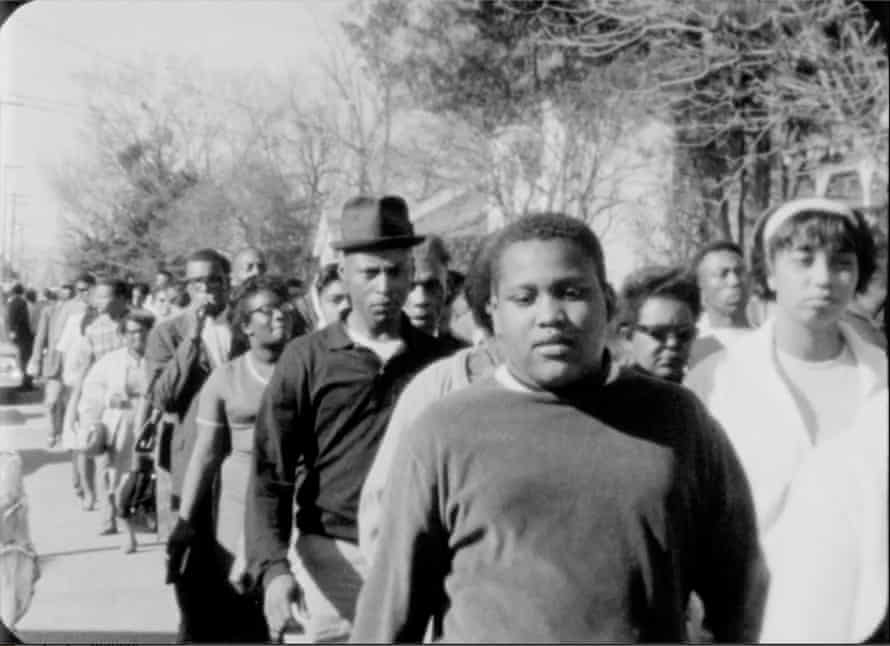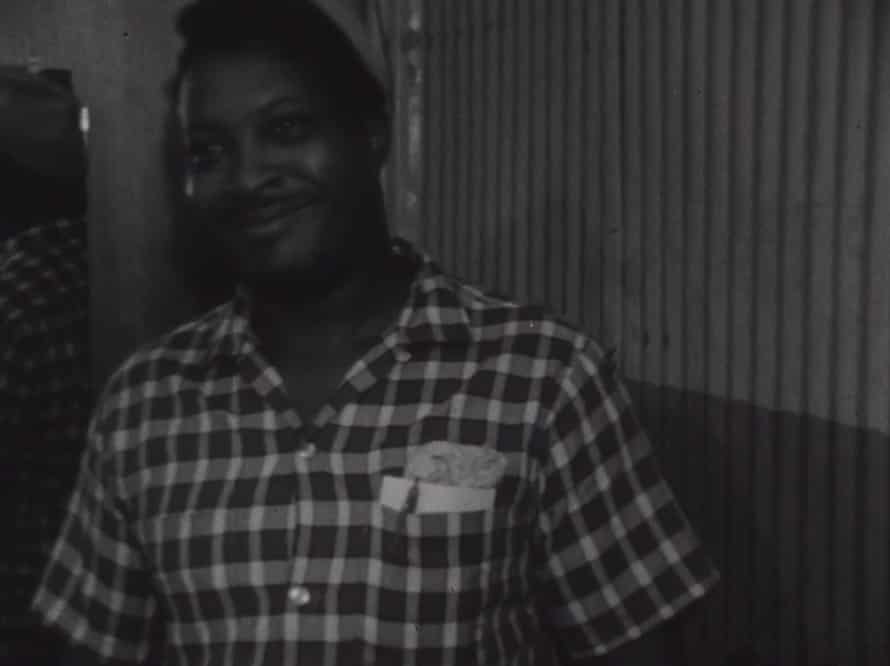Shared from Culture | The Guardian
First we see him leaning against a wall, arms folded, a working man with pen and paper tucked into the breast pocket of his checked shirt. Then he is kneeling, removing his cap, one hand resting on a Bible as he raises the other and swears a solemn oath.
This is Wharlest Jackson, long dead and long denied justice, but preserved forever on film at the moment he takes a stand against the Ku Klux Klan. Not long after joining a Black armed resistance group in Natchez, Mississippi, the 37-year-old will be murdered with impunity.
Jackson is among dozens of forgotten victims of Jim Crow violence whose cold cases are being rediscovered, reinvestigated and retold after half a century. The process does not necessarily deliver justice or end the pain of descendants. But it does contribute, as the title of a new film puts it, to an American Reckoning.
“As film-makers, I think we are extracting the truth from the graves of these people,” co-director Yoruba Richen says via Zoom from New York. “One thing that we can do is put their stories out there and, as much as we can, have the full story told.”
Drawing on rare vérité footage shot more than 50 years ago, the documentary offers an unusually intimate glimpse of the civil rights era in the deep south. Film of young African Americans throwing a football, playing in an abandoned car and riding bikes and horses makes for a vivid contrast with the horror of the white-robed Klan, said to have a bigger per-capita presence in Natchez than anywhere else.
A white supremacist is seen giving a bellicose speech above a giant Confederate battle flag, symbol of the slave-owning south during the civil war. He tells the crowd: “This is your America! This is your land! We are not going to be run out of our own country by a bunch of cannibals and savages.”
Among the film’s interviewees is Debra Taylor, daughter of Klan member Sonny Taylor, who recalls: “He beat us all for talking to any Black. We were not allowed. He thought we should send them back to Africa or kill them off.”
Medgar Evers, field secretary of the NAACP (National Association for the Advancement of Colored People, the oldest civil rights organisation in the country) in Mississippi, was assassinated in 1963. Two years later George Metcalfe, president of the NAACP’s Natchez chapter, was severely injured by a car bomb.
Protests ensued but there was little hope of protection from a police department that included Klan members in its ranks. American Reckoning shows how Black people formed armed self-defence groups such as the Deacons for Defense and Justice.
Richen, 49, who is African American, says: “I hope that people will understand that the Black freedom struggle involved many different strategies and wasn’t just reduced to the non-violent when you’re-attacked-don’t-attack-back, but that we did defend our communities and had to because of white terrorism.”
The archival footage from 1965 and 1967 – much of it never broadcast before – came from film-makers Ed Pincus and David Neuman and was made available through the Amistad Research Center.
Richen and co-director Brad Lichtenstein were thrilled to discover the material including Jackson, the focal point of their narrative. Lichtenstein recalled: “Yoruba and I both virtual high-fived and celebrated when we saw Wharlest Jackson walk in to the swearing-in ceremony.”
It was about 8pm on 27 February 1967 when Jackson’s pick-up truck exploded as he was driving home from the Armstrong Tire & Rubber Company, where he had recently gained a promotion. The father of five, treasurer of the local NAACP chapter, suffered extensive damage to the lower-half of his torso and died at the scene.
The FBI concluded that the bomb or other explosive device was placed under the driver’s seat area on the outside of the frame of the truck. But the culprit was never identified or arrested.
American Reckoning begins with footage of Jackson’s funeral. One mourner comments: “They’ve been killing us here for 400 years.” Another voice is heard: “Wake up, white people, before it’s too late.”
Lichtenstein, 53, who is white, explains: “We open with that because the whole point of calling this American Reckoning is to say that there isn’t anything exceptional about this era.
“What is still with us, besides lots of violence that’s racially motivated, is white denial. Part of the controversy in this country about critical race theory is an extension of that denial – we’re not teaching history that makes people feel uncomfortable as much as we know it’s the truth.”
Speaking by phone while driving in Mississippi, Lichtenstein continues: “I was just in a room of about 50 or 60 people, about two-thirds white, in Natchez. Just now is Natchez starting to reckon with this past, starting to put up memorials, starting to teach about it.”
The film also shows the late activist and congressman John Lewis leading a federal government effort to investigate civil rights-era cold cases. The Emmett Till Unsolved Civil Rights Crime Act was signed into law in 2008.
This prompted newspaper journalist Stanley Nelson to investigate allegations that a Ku Klux Klan offshoot, known as the Silver Dollar Group, was involved in Jackson’s murder. But although the late Raleigh “Red” Glover, leader of the Silver Dollar Group, is the prime suspect, the FBI closed the case without an official verdict.
The film shows Jackson’s son, Wharlest Jr, and daughter, Denise, hurt and tearful as they realise they will never get definitive answers. They are not alone. Of more than 150 cases opened under the Till Act , all but 25 have been closed, and the justice department has not yet brought a single indictment.

Richen, whose past credits include The Killing of Breonna Taylor, says: “This film and this story shows the limits of the justice system, especially for cases where most of the people have passed on. They’re not going to get anybody in jail for these crimes but I think it can be a way to talk about what is justice.
“One of the things that we learned in making this film is that Congressman Lewis wanted a bigger bill. He wanted a truth and reconciliation-type bill, in the realm of what South Africa did after apartheid, that would bring stories to light. But it wasn’t something that was politically viable at the time.”
She adds: “It opens up a conversation of what justice can be for these families, of reparations, of truth and reconciliation. Now we’re having a conversation about reparations, which a few years ago was a fringe idea. These things take time and can be very slow but I do think this can be a way to begin that conversation.”
The Mississippi state flag incorporated the Confederate battle emblem for 126 years. It was finally removed in 2020.
Lichtenstein reflects: “If we don’t address racist violence and white supremacist violence in this country right now, 50 years from now we’re going to be talking about the cold cases of 2022. You listen to the words that people were saying in 1965 in the footage and there really isn’t much difference between then and now.
“The protest movements, the same kinds of demands: we really haven’t changed that much as a country. People tend to sensationalise the violence back then because the KKK wore hoods and burned crosses but today we have plenty of white militia groups and just everyday people in a system that continues to terrorise Black communities in this country.
“The reason we called it American Reckoning is in part, to call up that relationship between the past and the present.”
Images and Article from Culture | The Guardian

